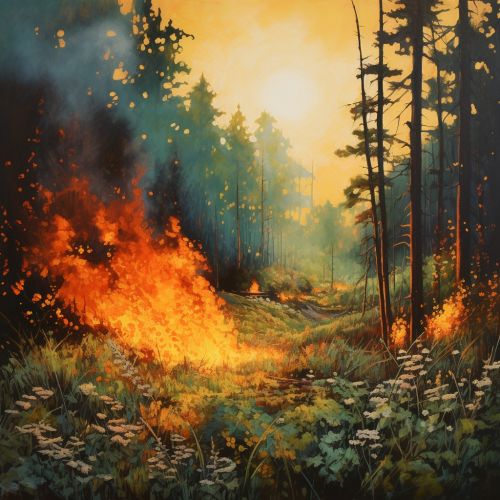Fire Ecology and Management
Introduction
Fire ecology is the study of the role of fire in the environment. It involves understanding how fire influences the ecosystem and its various components such as vegetation, wildlife, and the atmosphere. Fire management, on the other hand, involves the application of fire ecology principles to manage and control wildfires, reduce fire hazards, and achieve desired ecological effects.
Fire Ecology
Fire ecology is a branch of ecology that focuses on the origins of wildland fire and its relationship with the environment that surrounds it, both living and non-living. A key aspect of fire ecology is understanding the ecological processes involved in fire events and how these processes influence ecosystem components.
Fire Regimes
A fire regime refers to the patterns of fire incidents over an extended period. These patterns may include the frequency, extent, intensity, and severity of fires within a specific ecosystem or geographical area. Fire regimes are a critical component of fire ecology as they influence the distribution and abundance of species, ecosystem processes, and the structure of vegetation communities.
Fire Adaptations
Many plant species have evolved adaptations that enable them to survive or regenerate after a fire. These fire adaptations include fire-resistant traits such as thick bark, underground storage organs, and fire-triggered germination. Understanding these adaptations is crucial in predicting how different species respond to fire and how fire influences species diversity and community structure.
Fire Management
Fire management involves the application of fire ecology principles and techniques to manage fire-prone landscapes. It includes a range of activities such as fire prevention, fire suppression, and the use of prescribed fire to achieve specific management objectives.
Fire Prevention
Fire prevention involves activities aimed at reducing the risk of fire ignition. This can include public education campaigns, law enforcement, and the creation of firebreaks.
Fire Suppression
Fire suppression involves activities aimed at extinguishing wildfires. This can include the use of firefighting crews, aircraft, and firefighting chemicals.
Prescribed Fire
Prescribed fire, also known as controlled burning, is the deliberate use of fire under specified conditions to achieve specific objectives. These objectives can include reducing fuel loads, improving wildlife habitat, and maintaining fire-dependent ecosystems.
Role of Fire in Ecosystems
Fire plays a crucial role in many ecosystems. It can influence ecosystem processes such as nutrient cycling and succession, alter the structure and composition of vegetation communities, and affect wildlife populations and habitat.
Nutrient Cycling
Fire can influence nutrient cycling by releasing nutrients stored in vegetation and litter into the soil. This can enhance soil fertility and promote plant growth.
Succession
Fire can influence succession, the process of change in the species structure of an ecological community over time. By removing vegetation, fire can create opportunities for pioneer species and influence the trajectory of succession.
Vegetation Structure and Composition
Fire can alter the structure and composition of vegetation communities by removing certain plant species and promoting others. This can result in changes in species diversity and community structure.
Wildlife
Fire can influence wildlife populations and habitat by altering vegetation structure and composition. This can create new habitat opportunities for some species and reduce habitat availability for others.
Conclusion
Understanding fire ecology and applying its principles in fire management is crucial in managing fire-prone landscapes. Fire plays a critical role in many ecosystems, influencing nutrient cycling, succession, vegetation structure and composition, and wildlife populations and habitat. By understanding these processes, we can better manage fire and its effects on our environment.


